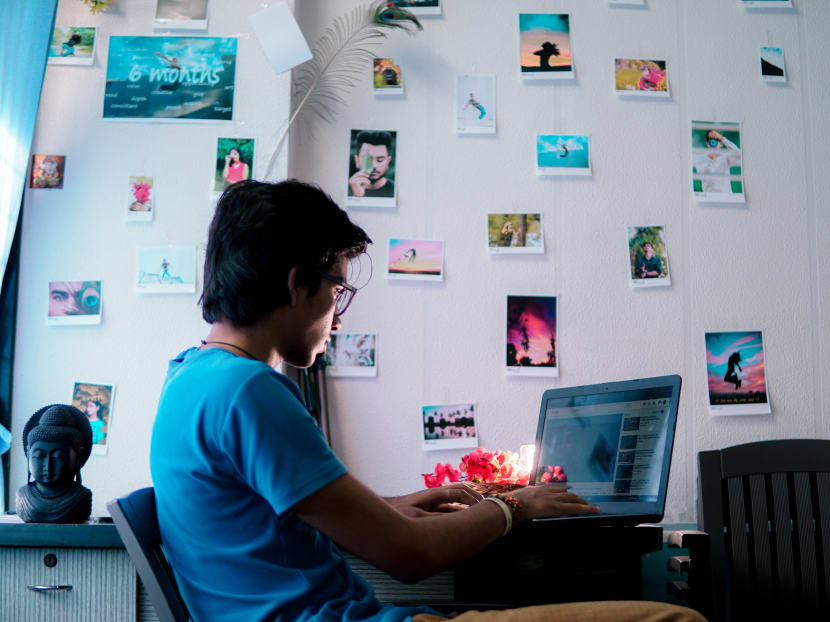Taking care of our eyes during Covid-19
If the eyes are the window to the soul, then for many of us, the ongoing pandemic has left us with windows in need of a good scrubbing.

If the eyes are the window to the soul, then for many of us, the ongoing pandemic has left us with windows in need of a good scrubbing.
With Covid-19 (and its ever-growing list of side effects) in the backdrop, our eyes probably aren’t ranking very high on our list of health concerns. But the reality is that living with the pandemic is taking a toll on our eye health, whether we realise it or not.
First, we’re now spending far more time on our devices. This is especially so as different facets of our lives are taken online, from work to recreation.
However, prolonged time spent on our devices can lead to a host of problems. One major eye-related concern that has risen in incidence during the pandemic is computer vision syndrome (CVS).
How does this happen? Well, a person typically blinks around 18 times a minute. This is important, because blinking moistens the eyes by stimulating tear production.
But when using digital devices, people blink much less — as few as three times a minute during intense periods of usage. This means significantly less moisture, leading to symptoms such as eye dryness and blurry vision.
Extended periods of computer use can also affect our ability to focus on near objects (called accommodation), which can cause double vision and fluctuating myopia.
Other factors that can affect our vision include poor room lighting (whether it’s too dim or too bright), and monitors that are too small, or have inappropriate contrast, resolution, glare, and refresh rates.
And it’s not just our devices that are hurting our eyes — our masks are, too.
With the increase in usage of face masks during the pandemic, ophthalmologists around the world have observed more and more patients suffering from mask-associated dry eye (Made).
This condition is caused because when we wear face masks, the air generated when we breathe out is channelled upwards.
The air goes out of the top of the face mask and over the surface of the eye, causing tears to evaporate and leaving the surface of the eye dry.
As a result, your eyes may feel gritty, irritated, itchy, or watery.
Certain groups of people are particularly susceptible to Made, namely the immunocompromised, those with conditions such as Sjogren’s syndrome (an immune system disorder marked by dry eyes and dry mouth), the elderly, contact lens wearers, and those who wear masks for prolonged periods of time.
WHAT WE CAN DO
Although working from home remains the default for many, there are steps you can take to improve your work setup.
1. When it comes to screens, size matters. Make sure that you’re working on a sufficiently large monitor screen, at least 61cm wide (laptops aren’t ideal for prolonged usage). Your monitor screen should also be at least 51cm away from you, and your screen brightness should be at 250 nits or above.
2. Use reading glasses for close work if necessary (increasing the font size can be helpful too). Trying to read things from inappropriate distances can cause eye strain.
3. Lighting is important. Use flicker-free LEDs instead of incandescent bulbs, and ensure that ambient lighting isn’t too bright or too dim. Avoid reflective surfaces or harsh lighting that casts shadows.
4. Observe the 20-20-20 rule: For every 20 minutes of work, take a 20 second break to look at something at least 20 feet (6.1m) away from you. This helps relax your eye muscles.
5. Spending most of your day in an air-conditioned environment can dry your eyes out. Every once in a while, try to take breaks in places where humidity is a little higher. Alternatively, consider getting a personal humidifier.
6. If symptoms persist, lubricating drops can help alleviate dry eye by acting as a tear replacement.
There are also steps we can take to keep Made at bay.
First, ensure your face mask fits well. For surgical masks, there’s usually a little metal band at the top of your mask, which you can press down to fit your nose bridge so that less hot air escapes.
If your symptoms are severe, you can also consider taping down the top edge of your mask for prolonged wear.
If all else fails, there are more advanced treatments available for patients with persistent and severe dry eye.
For instance, your doctor may recommend cyclosporine, an anti-inflammatory drug that stimulates tear production.
An additional measure involves the use of silicone punctal plugs. These are tiny, removable devices that can be inserted into the tear ducts to prevent moisture from draining from the eye.
However, these methods should be considered only if lifestyle changes do not work.
If you’re concerned by your symptoms, please consult your eye doctor for advice.
ABOUT THE AUTHOR:
Dr Loon Seng Chee is a senior consultant at the Department of Ophthalmology, National University Hospital.









